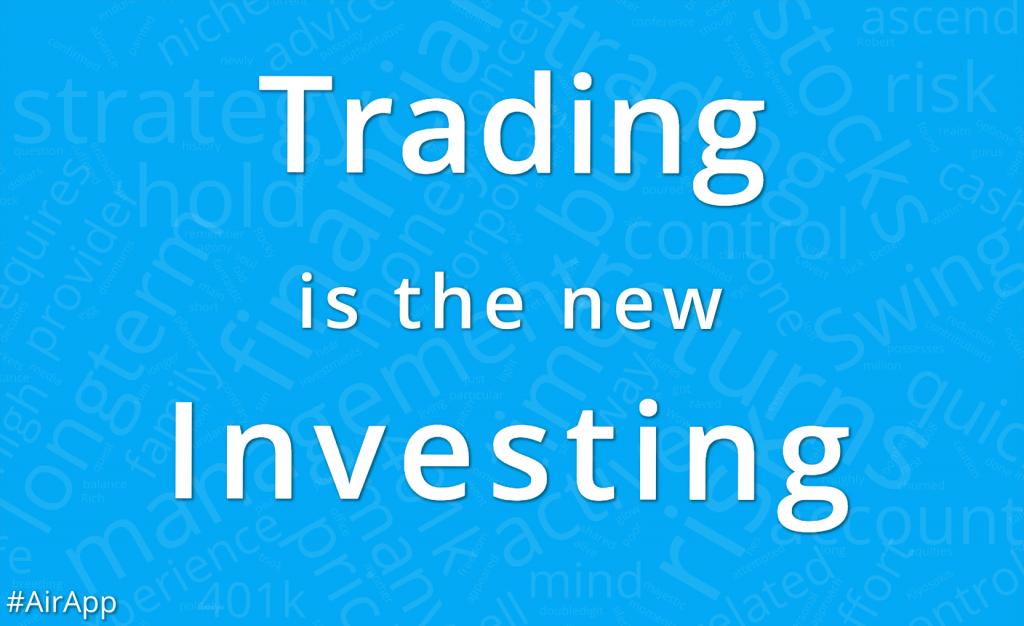
The newly painted bright blue and green walls appeared to glow as the sun rose over the majestic Rocky Mountains and poured its gleaming light through the room-length windows of our main office conference room. My colleagues and I gathered to hear a pitch from our new 401k provider, and I was politely listening, even though I had lost interest about five minutes into the presentation.
The deviation occurred when the speaker confirmed the absence of equities from our investment options. He made an effort throughout the presentation to minimize the risk perception of bonds and funds while painting a picture of fire and brimstone when describing anything remotely related to trading stocks.
As he calculated long-term projections, a particular fund caught his eye: “Wow a 12% return would be fantastic”, he raved. This remark got my attention. Not because I shared his enthusiasm for double-digit returns, but the contrary.
The Covert Risk of “Buy and Hold”
For as long as I can remember, authoritative financial figures in my life have not attempted to minimize the importance of 401k contributions and “buy and hold” style investments. The problem with this approach is that it requires an abundance of something not a single living soul on this planet possesses: time.
In 2008 I remembered watching in agony as the U.S. financial markets suffered one of the most horrific downturns in modern history, and many of my family members endured a 50% reduction in their life savings. It took my uncle 30+ years of corporate servitude to save up a million dollars, and in a few short moments, his account balance dropped roughly $750,000. He would need another few decades to repair his broken nest egg, and if by some stroke of luck he’s still alive by that time, he’ll be too old to enjoy the cash.
Mainstream financial media is quick to caution against short-term active money management strategies, just as our new 401k provider had done, but my personal experience leads me to question traditional advice. I am simply not willing to risk my entire life on an investment strategy that may or may not lead my retirement account down the path of financial ruin.
My peace of mind requires control, and passivity is not a breeding ground for this essential element. I began my quest for regulated risk shortly after my devastated family members went back to work, and found it within the realm of niche alternative trading strategies, not diversification as some self-proclaimed financial gurus may claim.
A Better Way to Build Long-term Wealth
It was many years ago when I was reading Rich Dad Poor Dad, and I couldn’t get Robert Kiyosaki’s methodology for quick money out of my head. This concept churned in my mind as he talked about buying the stock of small companies and selling into the mania that typically followed an initial public offering.
I modeled my current trading system after the spirit of this idea, and 12% annual returns have no place in my active investment strategy. As I applied this concept over a longer time frame, it was critical to recognize that compounding the exponential returns of “quick money” may be achieved through effective risk management.
I don’t trade IPOs, but I do operate in a similar niche in the sense that it provides competitive opportunities for exponential returns. My retirement strategy garners gains through swing trading volatile stocks, meaning I only need to hold my shares for a few days or weeks to take advantage of sharp, ascending price movement.
I employ active risk management strategies when my trades are live while managing long-term risk through liquidation in favor of an “all cash” position during turbulent market conditions. I have avoided many market pullbacks over the years, and my strategy is capable of consistent triple-digit annual returns if properly executed through the practice of unwavering daily discipline and emotional intelligence.
This risk-management driven trading strategy is what allows a trader to compound exponential returns over time, and bring shame to the performance of those who fall victim to such buzzwords as “buy and hold” or “buy low, sell high.” If I were to apply a catchphrase to my active account management practices, it would be “buy high, sell higher” or “cut losses intelligently.”
A Clear Path Forward
How exactly does one locate stocks that offer both exponential returns and the opportunity to capitalize through proper risk management? I started by seeking stocks who experience volatility in reaction to event-driven catalysts, and are propelled by fundamental and technical analysis alike. My favorite events being those related to corporate earnings or cash-flow, whose price charts are forming bullish technical patterns such as an ascending triangle or long-term range breakout.
Traders can leverage the Earnings Winner web application I developed to locate fundamentally sound stocks that are primed for an imminent increase in price or may choose to entertain the trade ideas I offer through my website and social media. Either way, you will soon be headed in the direction of financial fortitude when you thwart the destructive direction of traditional investment advice.
Success comes rather routine with the right tools, habits, and knowledge. Depending on your retirement goals, you may only need to make a handful of trades every month to meet your target. The amount of time and effort you steer towards your savings is ultimately up to you, but there is no fault in taking control of your financial future – only freedom.
Related Posts
January 5, 2022
How to Set Up a Metamask Wallet
Setting up a Metamask wallet is a key aspect of interacting within Web3. In…
January 3, 2022
What is Financial Independence?
What is financial independence and what are the 3 building blocks? Read more to…
April 4, 2021
Earnings Winners Are The Future of A Certain Trade, Hasnae Taleb Says
On Monday, Dubai TV has hosted Hasnae Taleb, a young entrepreneur and investor,…


